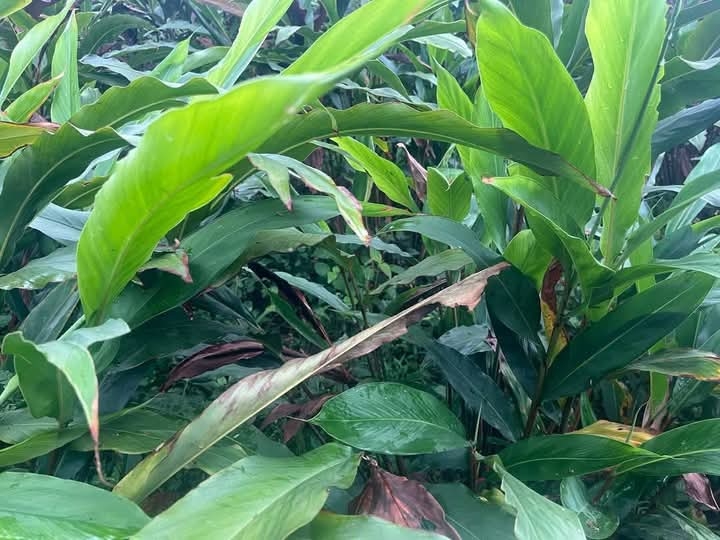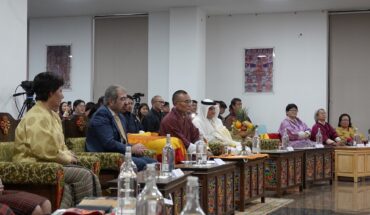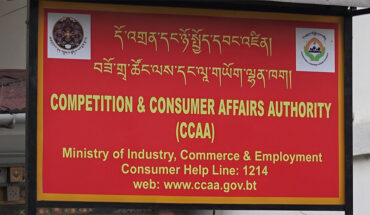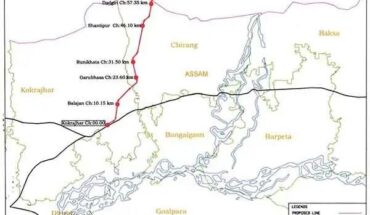
Cardamom revival in Tading gewog rekindles hope
…but sustainability concerns persist
TIL BDR GHALLEY
Thimphu
A spike in cardamom prices has revived interest in the spice crop across Tading Gewog in Samtse, bringing once abandoned terraced fields back into cultivation.
Yet, as farmers respond to the price surge with renewed enthusiasm, concerns over market volatility, recurring plant diseases, and inadequate institutional support cast a shadow over the optimism.
During the previous winter harvest, prices peaked at Nu 68,000 per 40 kilograms or Nu 1,700 per kilogram prompting farmers to reclaim fallow lands and invest heavily in new plantations.
However, with the upcoming harvest season approaching, prices have dropped significantly to Nu 40,000 per 40 kilograms (Nu 1,000 per kg), triggering fears of yet another market downturn.
“We thought cardamom would help us recover from past losses, so we cleared our barren fields and planted again,” said Dik Raj, a farmer in Panzhing village.
Motivated by the prior season’s high prices, many growers purchased saplings at Nu 8 to Nu 10 each from other dzongkhags, including Bara, Tendu, and Haa.
For most families in Tading, cardamom remains the only viable cash crop, especially as paddy and maize yields continue to decline due to increasing water scarcity, human-wildlife conflict, and erratic climate patterns.
Still, not all farmers are confident. “When cardamom is not in the market, the price is high. But once we harvest and sell, the price suddenly drops,” said Tshering Dema, a resident farmer, reflecting the shared anxiety of many growers.
Due to the gewog’s proximity to the Indian border, farmers often bypass domestic markets and sell directly to Indian traders. While this offers quick returns—especially for paying school fees or settling debts it leaves farmers exposed to unpredictable pricing.
“When the Indian buyers come, they decide the price,” said Rupa, a farmer from Upper Tading.
In response, the Food Corporation of Bhutan Limited (FCBL) introduced a buy-back scheme this year, offering rates between Nu 1,575 and Nu 1,776 per kilogram.
However, many farmers still prefer selling directly across the border due to faster payments, despite the risks involved.
Adding to the challenges are the reemergence of diseases such as Chhirkey and Foorkey, which affect cardamom plants by causing yellowing, leaf streaks, and sterile shoots. Farmers say they are ill-equipped to deal with such outbreaks.
“Sometimes we just pull out the plants and burn them, but we don’t know if that is the right solution,” said Kumari, who invested her entire savings to plant 5,000 saplings.
Climate change is another looming threat. Unpredictable rainfall patterns, longer dry spells, and the lack of irrigation infrastructure have left farmers increasingly vulnerable.
While the Royal Insurance Corporation of Bhutan Limited (RICBL) has proposed a crop insurance scheme that includes cardamom, most farmers remain unaware of it or are unable to afford the estimated 8 percent premium.
Despite earlier plans to launch the scheme in July 2025, the rollout has been delayed due to funding constraints and the need for further government deliberation.
According to the Ministry of Agriculture and Livestock, the scheme is now tentatively scheduled to begin on November 11 2025. If this timeline is missed, farmers may have to wait until next year for any protection against crop and livestock losses.
Although the government has included high-value crops like cardamom in the 13th Five-Year Plan to enhance rural livelihoods and reduce imports, many growers feel that policy-level commitments are not being matched by on-ground action.
“We understand the government wants us to be self-reliant, but without price monitoring, we will always be at the mercy of middlemen,” said Sonam, another local farmer.
Agriculture extension officer Purna Bdr Sanyasi said that addressing these challenges will require a multi-pronged approach.
He recommends establishing a disease monitoring and alert system, training farmers on best practices like proper spacing and irrigation, and introducing integrated pest management along with organic soil enhancement techniques.
“Unchecked expansion without sustainable methods could lead to long-term issues like soil degradation and pest outbreaks,” he said, adding intercropping with shade trees and maintaining soil health are essential for long-term viability.
While there are currently no formal mechanisms to stabilize cardamom prices, Sanyasi suggests that forming farmer cooperatives and promoting group marketing could increase bargaining power.
He also stressed the need for building direct linkages between growers and local exporters, along with designing support schemes in collaboration with relevant stakeholders to ensure market assurance during price crashes.
“I routinely offer these recommendations during my field visits to help farmers improve their practices,” Sanyasi noted.
Despite all odds, many in Tading remain hopeful. “We are happy to see green in our fields again, and we pray prices remain high,” said Beepana Gurung, expressing the optimism shared by many in the gewog.
Whether these renewed hopes can be sustained, however, may depend on timely interventions that ensure fair pricing, disease management, and long-term resilience for cardamom growers.





